Vemer CLIP-485 Handleiding
Vemer
Meetapparatuur
CLIP-485
Bekijk gratis de handleiding van Vemer CLIP-485 (2 pagina’s), behorend tot de categorie Meetapparatuur. Deze gids werd als nuttig beoordeeld door 67 mensen en kreeg gemiddeld 4.3 sterren uit 34 reviews. Heb je een vraag over Vemer CLIP-485 of wil je andere gebruikers van dit product iets vragen? Stel een vraag
Pagina 1/2

AVVERTENZE DI SICUREZZA
1) Leggere attentamente le presenti istruzioni prima di installare il dispositivo
2) L’installazione dello strumento deve essere eseguita solo da personale qualificato
3) Prima di accedere ai morsetti assicurarsi che i conduttori da collegare al dispositivo non
siano in tensione
4) Assicurarsi che il quadro elettrico nel quale deve essere inserito il dispositivo sia tale da
garantire, dopo l’installazione, l’inaccessibilità ai morsetti
5) Non alimentare o collegare il dispositivo se qualche parte di esso risulta essere
danneggiata
* Nota:
– Nell’impianto elettrico dell’edificio in cui lo strumento viene installato, va compreso un
interruttore o un disgiuntore: questo deve trovarsi vicino allo strumento ed essere facilmente
raggiungibile da un operatore.
Deve inoltre essere presente un dispositivo di protezione contro le sovracorrenti.
– Il cablaggio del quadro deve essere eseguito in conformità con quanto previsto dalle norme CEI.
CARATTERISTICHE TECNICHE
•Alimentazione: (-15% ÷ +10%)230 V AC
•Frequenza: 50/60 Hz
•Assorbimento: 2 VA
•N° max. di contatori controllabili: 8 per ogni CLIP-485
•Collegamento a Pc “Multidrop” interfaccia RS-485 protocollo Modbus
•Durata impulso: 100 ms
•Temperatura di funzionamento: -10 °C ÷ +45 °C
•Temperatura di magazzinaggio: -25 °C ÷ +70 °C
•Umidità tollerata: max 95% non condensante
•Gestione doppia tariffa
•Led di segnalazione
– ACTIVITY (rosso): transito dati sulla linea seriale RS-485
– ON (verde): dispositivo alimentato
•Grado di protezione:
– IP20 morsetti di collegamento
– IP41 fronte strumento
•Dimensioni: 4 moduli DIN
LEGENDA
A) Dimensioni
B) Collegamenti elettrici
C) Fronte strumento e dip-switch
Led ON (verde)
Led ACTIVITY (rosso)
Sportello dip-switch
D) Esempio di collegamento seriale
E) Tabella impostazione dip-switch
DESCRIZIONE INGRESSI (fig. B) e PANNELLO FRONTALE (fig. C)
Dal pannello frontale è possibile controllare se il dispositivo è alimentato
(Led “ ” di colore verde:ON ) e il flusso dei dati sul collegamento seriale
(Led “ ” di colore rosso:ACTIVITY ). Per accedere ai dip-switch che consentono di impostare
l’indirizzo seriale del modulo concentratore utilizzare un cacciavite e rimuovere la copertura .
Il singolo microinterruttore è ON quando abbassato, OFF quando sollevato.
INGRESSO N° DESCRIZIONE
1 Alimentazione
2 Libero
3 Alimentazione
4 Libero
5 RS 485 (-)
6 RS 485 (+)
7 Libero
ottatnoc nu noc ilibatiucricotroc aippod affirat issergnI9,8
esterno per doppia tariffa
10÷17 Ingressi segnali (+) provenienti dai contatori d’energia
18 Ingresso segnali (-) (riferimento comune per tutti i contatori)
COLLEGAMENTI E FUNZIONAMENTO
Il modulo concentratore d’impulsi è un dispositivo che consente di convogliare i segnali provenienti
dai contatori di energia mod. ENERGY (monofase e trifase) e d’indirizzare i dati dei consumi
memorizzati ad un’unità remota di raccolta ed elaborazione, come ad esempio un PC
(unità “master”).
COLLEGAMENTI
•Prima di procedere assicurarsi che i conduttori di rete non siano in tensione
•Il collegamento al PC viene effettuato in “multidrop” tramite linea seriale RS-485 operante secondo il
protocollo “MODBUS” con le seguenti caratteristiche:
– modalità di trasmissione: ASCII
– velocità di trasmissione (Baud Rate): 9600 bps (bit per secondo)
– formato del byte trasmesso: 1 start bit, 7 data bits, no parity, 2 stop bits
– modalità di rilevamento degli errori: LRC (Longitudinal Redundancy Check)
•Ad ogni modulo concentratore possono pervenire max 8 segnali in uscita da contatori
d’energia ENERGY-230 o ENERGY-400
•Ad ogni linea seriale RS-485 è possibile collegare
– fino a 31 moduli concentratori senza l’utilizzo di amplificatori di segnale (repeaters), ad
una distanza max. di 1000 m.
– fino a 247 moduli concentratori a gruppi di 30, separati da opportuni amplificatori di
segnale grazie ai quali, ovviamente, aumenta anche la distanza massima consentita
•Sulla linea seriale non sono ammesse derivazioni o collegamenti a “T”
•Il collegamento di “N” moduli concentratori si realizza portando i due conduttori dell’ultimo
CLIP-485 all’ n°1 modulo fino al dispositivo collegato alla linea RS-485; il collegamento fra gli “N”
CLIP-485
dovrà essere effettuata utilizzando i morsetti 5-6 (vedi esempio fig. D)
•L’interfaccia seriale e il software di supervisione “Energy View” sviluppato da VEMER, gestirà
l’intero collegamento seriale dei dispositivi
FUNZIONAMENTO
•Il modulo concentratore CLIP-485, su richiesta del software di controllo, restituisce una stringa
contente il numero di impulsi contati per ogni ingresso ed il tempo di funzionamento dello strumento
in minuti. Questi dati sono valori assoluti, nel senso che vengono continuamente aggiornati
purché il dispositivo sia alimentato.
•Lo strumento è in grado di gestire un sistema tariffario doppio, cioè con due tariffe diverse a
seconda della fascia oraria. Questa funzione può essere implementata cortocircuitando i due
ingressi 8 e 9 (fig. B) tramite un contatto esterno senza tensione cioè, ad esempio, utilizzando
il contatto d’uscita di un timer.
* Nota: la lunghezza massima consentita per i cavi provenienti dal timer è 2 m.
CONFIGURAZIONE TRAMITE DIP-SWITCH
Per poter collegare diversi CLIP-485 su una sola linea seriale, è necessario configurare il singolo stru-
mento in modo che possa essere univocamente identificato dall’unità master
(ad esempio un PC). Ogni CLIP-485, quindi, dovrà avere un proprio indirizzo seriale di 8 bit, imposta-
bile direttamente sullo strumento utilizzando gli 8 dip-switch presenti. L’impostazione e memoriz-
zazione deve avvenire a dispositivo non alimentato. I dip-switch vanno configurati in modo che il
numero binario da essi definito (ON=1, OFF=0) corrisponda all’indirizzo seriale, cioè al numero intero,
che si vuole attribuire al singolo modulo concentratore.
Il singolo microinterruttore è ON quando abbassato, OFF quando sollevato.
In fig.E sono riportate le impostazioni degli 8 dip-switch per poter configurare fino a 32 CLIP-485
con indirizzi seriali diversi (in una rete RS-485, non è ammessa la presenza di più dispositivi
CLIP-485 con lo stesso indirizzo seriale, altrimenti si potrebbero verificare dei conflitti di
trasmissione). Non modificare l’impostazione dei dip=switch quando il CLIP-485 é alimentato.
Terminati i collegamenti (fig. D) e le impostazioni, alimentare il circuito.
* Nota: Se fosse necessario utilizzare più di 32 strumenti e non si conoscesse la codifica binaria per
impostare i dip-switch, è disponibile, su richiesta, la tabella con tutte le impostazioni realizzabili.
* Nota: Gli indirizzi 0 e 248 ÷ 255, non sono consentiti in quanto non previsti dal protocollo MODBUS.
Qualora un modulo concentratore venisse erroneamente configurato con uno di questi indirizzi
“proibiti”, non riuscirebbe a dialogare con il dispositivo master.
COMANDI MODBUS IMPLEMENTATI
•Read Input Register (04): legge i registri su cui sono memorizzati i contatori
•Force single/multiple coil (05/15): funzione per l’esecuzione di comandi (singoli o multipli)
sullo strumento
– 0001 Reset generale dello strumento (contatori, tempi, Diagnostic Register)
– 0002 Reset contatori impulsi
– 0003 Reset contatori minuti
•Diagnostics Subfuncion (08): sono alcune funzioni di verifica e controllo. In particolare sono
implementati i “Subfunction Code” 00, 02, 10
– 00 Return Query Data: il dispositivo slave (cioè il modulo concentratore), risponde con un mes
saggio identico a quello ricevuto
– 02 Return Diagnostic Register: lo slave restituisce un registro a 16 bit in cui sono riportate le
possibili condizioni di errore riscontrate dallo strumento. Il significato dei bit è il seguente:
Bit 0: mancanza di alimentazione
Bit 1: alterazione dei dati contenuti in eeprom
Bit 2÷15: non utilizzati
– 10 Clear Counters and Diagnostic Register: azzera il Diagnostic Register
GESTIONE DELLE CONDIZIONI DI ERRORE
Oltre al controllo dei caratteri LRC, sono implementati i codici di “Exception Response” 01, 02, 03, che
il Clip-485 invia al master in caso di errore, in modo che il software di gestione prenda i necessari
provvedimenti in relazione al tipo di errore riscontrato
– 01 Illegal Function: quando il concentratore d’impulsi riceve dei codici non previsti
– 02 Illegal Data Address: quando si cerca di accedere ad indirizzi non utilizzati dal concentratore
– 03 Illegal Data Value: quando il concentratore riceve un campo “Data” con valori non ammessi
NORME DI RIFERIMENTO
La conformità alle direttive comunitarie:
2006/95/CE (Bassa Tensione - LVD)
2004/108/CE (EMC)
è dichiarata con riferimento alle seguenti norme armonizzate
Sicurezza: CEI-EN 61010-1
Compatibilità elettromagnetica: e CEI-EN 61000-6-2 CEI EN 61000-6-4
Manuale d’Uso
MODULO CONCENTRATORE D’IMPULSI
Leggere attentamente tutte le istruzioni
(A)
(B)
45
60
~
2
3
0
V
5
0
-
6
0
H
z
+
+ + + +
(C)
87
70
10 11 12 13 14 15 16 17 18
1 2 3 456 7 8 9
Clip-485
Swit ch ACTIVITY
ACTIVITYON
(D)
Mod. CLIP-485
IS0265-020-052011
(E)
n 1 n 2 n 3 n 4 n 5 n 6 n 7 n 8°°°°°°°°
OFF OFF ON OFF OFF OFF OFF OFF
OFF OFF OFF ON ON ON ON ON
OFF OFF OFF ON ON ON ON OFF
OFF OFF OFF ON ON ON OFF ON
OFF OFF OFF ON ON ON OFF OFF
OFF OFF OFF OFF OFF OFF OFF ON
OFF OFF OFF OFF OFF OFF ON OFF
OFF OFF OFF OFF OFF OFF ON ON
OFF OFF OFF OFF OFF ON OFF OFF
OFF OFF OFF OFF OFF ON OFF ON
OFF OFF OFF OFF OFF ON ON OFF
OFF OFF OFF OFF OFF ON ON ON
OFF OFF OFF OFF ON OFF OFF OFF
OFF OFF OFF OFF ON OFF OFF ON
OFF OFF OFF OFF ON OFF ON OFF
OFF OFF OFF OFF ON OFF ON ON
OFF OFF OFF OFF ON ON OFF OFF
OFF OFF OFF OFF ON ON OFF ON
OFF OFF OFF OFF ON ON ON OFF
OFF OFF OFF OFF ON ON ON ON
OFF OFF OFF ON OFF OFF OFF OFF
OFF OFF OFF ON OFF OFF OFF ON
OFF OFF OFF ON OFF OFF ON OFF
OFF OFF OFF ON OFF OFF ON ON
OFF OFF OFF ON OFF ON OFF OFF
OFF OFF OFF ON OFF ON OFF ON
OFF OFF OFF ON OFF ON ON OFF
OFF OFF OFF ON OFF ON ON ON
OFF OFF OFF ON ON OFF OFF OFF
OFF OFF OFF ON ON OFF OFF ON
OFF OFF OFF ON ON OFF ON OFF
OFF OFF OFF ON ON OFF ON ON
00000001
Posizione dip-switch
Dip-switch Setting
Position dip-switch
Dip-switch Einstellung
Posición dip-switch
Numero binario
Binary number
Numéro binaire
Binäre nummer
Numero binario
Indirizzo seriale
Serial address
Adresse sèriel
Serienweiser adresse
Dirección serial
1
00000010 2
00000011 3
00000100 4
00000101 5
00000110 6
00000111 7
00001000 8
00001001 9
00001010 10
00001011 11
00001100 12
00001101 13
00001110 14
00001111 15
00010000 16
00010001 17
00010010 18
00010011 19
00010100 20
00010101 21
00010110 22
00010111 23
00011000 24
00011001 25
00011010 26
00011011 27
00011100 28
00011101 29
00011110 30
0001111 31
00100000 32
++ + +
1 2 3 4
5 6 7 8
1 46 000 0
1 WhON
Ener gy- 230
0,1 kWh / Imp
230 V / 15 (22,5) A
kWh
10 11 12 13 14 15 16 17 18
12 3 4 5 6 7 8 9
3x230/400V In/5(6)A
50/60Hz
IEC 1036 cl . 2
Energ y -400 PWR
1 k Wh /Imp
146 000 0
kWh
Sw itc h In/5(6) A ~
1/4 k WhON
10 11 12 13 14 15 16 17 18
12 3 4 5 6 7 8 9
146 000 0
kWh
Energ y-230 TA
Sw itc h In/5(6) A ~
1/16 k WhON
IEC 1036 cl . 2
1 k Wh/I mp
230 V 50/60 H z
10 11 12 13 14 15 16 17 18
12 3 4 5 6 7 8 9
Clip -485
Sw itc h ACTIVIT Y
ACT IVITYON
++
+
+
+
+
+
+
10 11 12 13 14 15 16 17 18
1 2 3 4 5 6 7 8 9
3x230/400V In/5(6)A
50/60Hz
IEC 1036 cl . 2
Energ y -400 PWR
1 k Wh /Imp
1 46 000 0
kWh
Sw itc h In/5(6) A ~
1/4 k WhON
10 11 12 13 14 15 16 17 18
1 2 3 4 5 6 7 8 9
Clip -485
Sw itc h ACTIVIT Y
ACT IVITYON
+++
+
+
+
1 2 3 4
5 6 7 8
1 46 000 0
1 WhON
Ener gy- 230
0,1 kWh / Imp
230 V / 15 (22,5) A
kWh
+
+
+
+
+
+
RS-485
10 11 12 13 14 15 16 17 18
1 2 3 4 5 6 7 8 9
1 46 000 0
kWh
Ene rgy -400 P AR
1/4
kWh
ON
IEC 1 036 cl . 2
1 kva rh/Imp
kv arh
1/4
kv ar h
1 kWh /Imp
1 44 000 0
3x230/400 V 50/60 Hz
Sw itc h In/5(6) A ~
➠
1
10 11 12 13 14 15 16 17 18
1 2 3 456 7 8 9
Clip-485
Swit ch ACTIVITY
ACTIVITYON
2
➠
3
65
52 3 4 61
1411 12 13 1510
7
16
8 9
17 18
RS-485
IN 3
IN 2
IN 1
IN 8
Comune
Common
IN 4
IN 5
IN 6
IN 7
SAFETY WARNINGS
1) Read these instructions carefully before installing the device
2) The instrument should be installed by qualified personnel only
3) Before touching the terminals, make sure the wires to be connected to the device are
not live
4) Make sure that the electric panel in which the device is to be inserted will prevent
access to the terminals after installation
5) Do not power or connect the device if any part of it is damaged
* Note:
– The electrical system of the building in which the instrument is to be installed should be fitted
with a switch earth protection system. This should be located close to the instrument and within
easy reach of an operator.
There should also be a protection device against over-currents.
– The panel should be wired in accordance with the terms of the EN standards.
TECHNICAL SPECIFICATIONS
•Power supply: (-15% ÷ +10%)230 V AC
•Frequency: 50/60 Hz
•Absorption: 2 VA
•Max no. of contacters that can be controlled: 8 for each CLIP-485
•Multidrop connection to PC, RS-485 interface, Modbus protocol
•Impulse duration: 100 ms
•Operating temperature: -10 °C ÷ +45 °C
•Storage temperature: -25 °C ÷ +70 °C
•Humidity tolerated: max. 95% non-condensing
•Dual charge band handling
•Signalling lamps
– ACTIVITY (red): data transit on the RS-485 serial line
– ON (green): power on
•Protection level:
– IP20 connector terminals
– IP41 instrument front panel
•Dimensions: 4 DIN modules
LEGEND
A) Dimensions
B) Electrical connections
C) Instrument front panel and dip switches
ON warning lamp (green)
ACTIVITY warning lamp (red)
Dip switch cover
D) Example of serial connection
E) Dip switch setting table
DESCRIPTION OF INPUTS (fig. B) and FRONT PANEL (fig. C)
It is possible to check whether the device is powered from the front panel
(Green warning lamp:“ON” ) and the data flow on the serial connection
(Red warning lamp:“ACTIVITY” ). To gain access to the dip switches used to set the serial
address of the concentrator module, use a screwdriver to remove cover .
The single microswitch is ON when lowered and OFF when raised.
INPUT N° DESCRIPTION
P1 ower supply
F2 ree
P3 ower supply
F4 ree
R5 S 485 (-)
R6 S 485 (+)
F7 ree
edistuo na htiw detiucric trohs eb nac,stupni dnab egrahc lauD9,8
contact for dual charge band
10÷17 Signal inputs (+) from the energy contacters
18 Signal input (-) (common reference for all the contacters)
CONNECTIONS AND OPERATION
The impulse concentrator module is a device used to convey the signals from the ENERGY
contacters (single phase and three phase) and address the consumption data memorised to a
remote collection and processing unit, such as a PC (master unit).
CONNECTIONS
•Before proceeding, make sure that the power wires are not live
•The connection with the PC takes place in multidrop by means of a RS-485 serial line operating
in accordance with the MODBUS protocol and with the following characteristics:
– transmission mode: ASCII
– transmission speed (Baud Rate): 9600 bps (bits per second)
– format of byte transmitted: 1 start bit, 7 data bits, no parity, 2 stop bits
– error detection method: LRC (Longitudinal Redundancy Check)
•Each concentrator module should receive a maximum of 8 output signals from
ENERGY-230 or ENERGY-400
•The following can be connected to each RS-485 serial line
– up to 31 concentrator modules without using signal amplifiers (repeaters), at a maximum
distance of 1000 m
– up to 247 concentrator modules in groups of 30, separated by signal amplifiers, as a result of
which the maximum permitted distance is obviously increased
•No T junctions or connections will be permitted on the serial line
•The connection of “N” concentrator modules will take place by taking the two wires of the final
CLIP-485 at module 1 to the device connected to the RS-485 line. The connection between the “N”
CLIP-485's should be made using terminals 5-6 (see the example in fig. D)
•The serial interface and the Energy View supervision software developed by Vemer will handle
the entire serial connection of the devices
OPERATION
•The CLIP-485 concentrator module will, on the request of the control software, return a string
containing the number of contact impulses for each input and the operating time of the instrument
in minutes. This information takes the form of absolute values, in the sense that it is constantly
updated as long as the device is powered.
•The instrument is able to handle a dual charge band system, in which the charges differ in
accordance with the time band. This function may be implemented by short circuiting the two inputs
8 and 9 (fig. B) by means of an unpowered outside contact, such as the output contact of a timer.
* Note: the maximum permitted length for the cables coming from the timer is 2 metres.
CONFIGURATION BY DIP SWITCH
To connect various CLIP-485's to a single serial line, the single instrument has to be configured in
such a way that it can be unequivocally identified by the master unit (such as a PC). Each CLIP-485
therefore has to have its own 8 bit serial address which can be set directly from the instrument
using the 8 dip switches present. The setting and memorisation operations have to take place when
the device is not powered. The dip switches have to be configured in such a way that the binary
number they define in (ON=1, OFF=0) corresponds to the serial address, that is, the whole number,
to be
attributed to the single concentrator module.
The single microswitch is ON when lowered and OFF when raised.
Fig. E shows the settings of the 8 dip switches to configure up to 32 CLIP-485's with different serial
addresses (in a RS-485 network, more than one CLIP-485 with the same serial address are not
allowed, otherwise transmission conflicts could take place). Do not alter the setting of the dip
switches when the CLIP-485 is powered.
On completion of the connections (fig. D) and settings, power the circuit.
* Note: If it is necessary to use more than 32 instruments and you do not know the binary code
necessary to set the dip switches, the table with all the possible settings is available on request.
* Note: addresses 0 and 248 ÷ 255 cannot be used, as they are not laid down by the Modbus
protocol. If a concentrator module is incorrectly configured with one of these prohibited addresses,
it would not be able to communicate with the master device.
MODBUS COMMANDS IMPLEMENTED
•Read Input Register (04): this reads the registers in which the meters are memorised
•Force single/multiple coil (05/15): function used to execute single or multiple commands on the
instrument
– 0001 general instrument reset (meters, times, diagnostic registers)
– 0002 impulse meter reset
– 0003 minute counter reset
•Diagnostics Subfunctions (08): a group of checking and control functions. Subfunction Codes 00, 02,
10 are implemented
– 00 Return Query Data: the slave device (that is, the concentrator module), replies with a
message identical to the one received
– 02 Return Diagnostic Register: the slave returns a 16 bit register containing the possible error
conditions found by the instrument. The bits have the following meanings:
Bit 0: no power supply
Bit 1: alteration of the data contained in EEPROM
Bit 2÷15: not used
– 10 Clear Counters and Diagnostic Register: zeroes the diagnostic register
ERROR CONDITION MANAGEMENT
As well as the check on the LRC characters, the exception response codes 01, 02, 03 sent by the
Clip-485 to the master in the event of error are implemented, in such a way that the management
software is able to take the necessary steps with regard to the type of error encountered
– 01 Illegal Function: when the impulse concentrator receives codes not laid down
– 02 Illegal Data Address: when an attempt is made to gain access to address not used by the
concentrator
– 03 Illegal Data Value: when the concentrator receives a data field with values not permitted
REFERENCE STANDARDS
Conformity to EU directives:
2006/95/CE (LVD)
2004/108/CE (EMC)
is declared with reference to the following harmonised standards
Safety: CEI-EN 61010-1
Electromagnetic compatibility: e EN 61000-6-2 EN 61000-6-4
User's Manual
IMPULSE CONCENTRATOR MODULE
Read all the instructions carefully
ENERGY-VIEW
interfaccia seriale
serial interface
interface série
serielle Sc
interfaz se
VN970000
Vemer S.p.A.
I - 32032 Feltre (BL) • Via Camp Lonc, 16
Tel +39 0439 80638 • Fax +39 0439 80619
e-mail: info@vemer.it - web site: www.vemer.it

NOTICES DE SECURITE
1) Lire attentivement les présentes instructions avant d'installer le dispositif.
2) L’instrument doit être installé par un personnel expert.
3) Avant d'accéder aux bornes, assurez-vous que les conducteurs à connecter au dispositif
ne soient pas sous tension.
4) Assurez-vous que le tableau électrique où le dispositif doit être inséré garantisse la
totale inaccessibilité aux bornes après l'installation.
5) Ne mettez pas sous tension ou ne connectez pas le dispositif si l'une de ses
composantes est endommagée.
* Note:
– Dans l'installation électrique du bâtiment où l'instrument est installé, il doit y avoir un
interrupteur ou un disjoncteur: celui-ci doit se trouver près de l'instrument et être facilement
accessible par l'opérateur. Il doit en outre y avoir un dispositif de protection contre les
surintensités.
– Le câblage du tableau doit être réalisé conformément aux normes EN.
CARACTERISTIQUES TECHNIQUES
•Alimentation: (-15% ÷ +10%)230 V AC
•Fréquence: 50/60 Hz
•Absorption: 2 VA
•N° maximum de compteurs contrôlables: 8 pour chaque CLIP-485
•Connexion au PC “Multidrop” interface RS-485 protocole Modbus
•Durée de l'impulsion: 100 ms
•Température de fonctionnement: -10 °C ÷ +45 °C
•Température de stockage: -25 °C ÷ +70 °C
•Humidité tolérée: maximum 95% sans condensation
•Gestion double tarif
•Diodes d'indication
– ACTIVITY (rouge): transit de données sur la ligne série RS-485
– ON (vert): dispositif alimenté
•Indice de protection:
– IP20 bornes de connexion
– IP41 façade instrument
•Dimensions: 4 modules DIN
LEGENDE
A) Dimensions
B) Connexions électriques
C) Façade instrument et micro-interrupteurs
Diode ON (vert)
Diode ACTIVITY (rouge)
Volet micro-interrupteurs
D) Exemple de connexion série
E) Tableau de configuration des micro-interrupteurs
DESCRIPTION ENTREES (fig. B) et PANNEAU FRONTAL (fig. C)
Le panneau frontal permet de contrôler si le dispositif est alimenté (diode de couleur verte:“ON”
) et le flux des données sur la connexion série (diode de couleur rouge: ).“ACTIVITY”
Pour accéder aux micro-interrupteurs qui permettent de configurer l'adresse série du module
concentrateur, utiliser un tournevis et enlever le couvercle . Chaque micro-interrupteur est en
position ON lorsqu'il est abaissé et en position OFF lorsqu'il est soulevé.
ENTREE N° DESCRIPTION
1 Alimentation
2 Libre
3 Alimentation
4 Libre
5 RS 485 (-)
6 RS 485 (+)
7 Libre tcatnoc nu ceva selbatiucric-truoc elbuod firat seértnE9,8 externe pour double tarif
10÷17 Entrées signaux (+) provenant des compteurs d'énergie
18 Entrées signaux (-) (référence commune pour tous les
compteurs)
CONNEXIONS ET FONCTIONNEMENT
Le module concentrateur d'impulsions est un dispositif qui permet de convoyer les signaux
provenant des compteurs d'énergie mod. ENERGY (monophasé et triphasé) et d'adresser les
données des
consommations mémorisées vers une unité à distance de collecte et de traitement, comme par
exemple un PC (unité “maître”).
CONNEXIONS
•Avant de procéder, assurez-vous que les conducteurs d'alimentation ne soient pas sous tension.
•La connexion au PC est effectuée en “multidrop” à l'aide de la ligne série RS-485 opérant selon le
protocole “MODBUS” avec les caractéristiques suivantes:
– mode de transmission: ASCII
– vitesse de transmission (débit en bauds): 9600 bps (bits par seconde)
– format de l'octet transmis: 1 bit de start, 7 bits de données, sans parité, 2 bits de stop
– mode de détection des erreurs: LRC (Longitudinal Redundancy Check)
•
Chaque module concentrateur peut recevoir un maximum de 8 signaux en sortie provenant
de compteurs d'énergie ENERGY-230 ou ENERGY-400
•Il est possible de connecter à chaque ligne série RS-485:
– un maximum de 31 modules concentrateurs sans l'utilisation d'amplificateurs de signal
(répétiteurs), à une distance maximum de 1.000 m.
– un maximum de 247 modules concentrateurs par groupes de 30, séparés par des amplificateurs
de signal appropriés qui, bien entendu, augmentent également la distance maximum autorisée.
•Aucune dérivation ou connexion en “T” n'est admise sur la ligne série.
•La connexion de “N” modules concentrateurs est réalisée en portant les deux conducteurs du
dernier CLIP-485 au module n°1 jusqu'au dispositif connecté à la ligne RS-485; la connexion entre
les “N” CLIP-485 devra être effectuée en utilisant les bornes 5-6 (voir exemple fig. D).
•L’interface série et le logiciel de supervision “Energy View” conçu par VEMER, gèrera l'ensemble de la
connexion sérielle des dispositifs.
FONCTIONNEMENT
•Le module concentrateur CLIP-485, sur demande du logiciel de contrôle, restitue une chaîne
contenant le nombre d'impulsions comptées pour chaque entrée et le temps de fonctionnement de
l'instrument en minutes. Ces données sont des valeurs absolues, en ce sens qu'elles sont
continuellement mises à jour à condition bien entendu que le dispositif soit alimenté.
•L'instrument est en mesure de gérer un système tarifaire double, c'est-à-dire avec deux tarifs
différents en fonction de la plage horaire. Cette fonction peut être appliquée en court-circuitant les
deux entrées 8 et 9 (fig. B) à l'aide d'un contact externe sans tension, à savoir, par exemple, en
utilisant le contact de sortie d'un temporisateur.
* Note: la longueur maximum autorisée pour les câbles provenant du temporisateur est de 2 m.
CONFIGURATION A L'AIDE DES MICRO-INTERRUPTEURS
Pour pouvoir connecter différents CLIP-485 sur une même ligne série, il est nécessaire de
configurer chaque instrument de façon à ce qu'il puisse être identifié de façon univoquepar l'unité
maître (par exemple un PC). Chaque CLIP-485, donc, devra avoir sa propre adresse sérielle à 8 bits,
configurable directement sur l'instrument en utilisant les 8 micro-interrupteurs présents.
La configuration et la mémorisation doivent avoir lieu lorsque le dispositif n'est pas sous tension.
Les micro-interrupteurs doivent être configurés de façon à ce que le nombre binaire défini par
ceux-ci (ON=1, OFF=0)
corresponde à l'adresse sérielle, c'est-à-dire au numéro entier, que l'on souhaite attribuer à chaque
module concentrateur. Chaque micro-interrupteur est en position ON lorsqu'il est abaissé et
en position OFF lorsqu'il est soulevé.
La fig. E reporte les configurations des 8 micro-interrupteurs afin de pouvoir configurer jusqu'à 32
CLIP-485 avec des adresses sérielles différentes (dans un réseau RS-485, il n'est pas admis la
présence de plusieurs dispositifs CLIP-485 avec une même adresse sérielle car il pourrait ainsi se
vérifier des conflits de transmission).Ne pas modifier la configuration des micro-interrupteurs
lorsque le CLIP-485 est sous tension. Lorsque les connexions et les configurations sont terminées
(fig. D), mettez le circuit sous tension.
* Note: s'il est nécessaire d'utiliser plus de 32 instruments et si vous ne connaissez pas la
codification binaire pour configurer les micro-interrupteurs, vous pouvez recevoir, sur demande, le
tableau avec toutes les configurations réalisables.
* Note: les adresses 0 et 248 ÷ 255 ne sont pas autorisées car elles ne sont pas prévues par le
protocole MODBUS. Si un module concentrateur est par erreur configuré avec l'une de ces
adresses “interdites”, celui-ci ne réussira pas à dialoguer avec le dispositif maître.
COMMANDES MODBUS IMPLEMENTEES
•Read Input Register (04): lire les registres où sont mémorisés les compteurs
•Force single/multiple coil (05/15): fonction pour l'exécution de commandes (simples ou multiples )
sur l'instrument
– 0001 Remise à zéro générale de l'instrument (compteurs, temps, Diagnostic Register)
– 0002 Remise à zéro des compteurs des impulsions
– 0003 Remise à zéro des compteurs des minutes
•Diagnostics Subfunction (08): fonctions de vérification et contrôle. En particulier, il est implémenté
les “Subfunction Code” 00, 02, 10
– 00 Return Query Data: le dispositif esclave (à savoir le module concentrateur) répond avec un
message identique à celui reçu
– 02 Return Diagnostic Register: le dispositif esclave restitue un registre à 16 bits où sont
reportées les conditions d'erreur possibles relevées par l'instrument. Le sens des bits est le
suivant:
Bit 0: absence d'alimentation
Bit 1: altération des données contenues dans l'EEPROM
Bit 2÷15: pas utilisés
– 10 Clear Counters and Diagnostic Register: remet à zéro le Diagnostic Register
GESTION DES CONDITIONS D'ERREUR
Outre le contrôle des caractères LRC, il est effectué l'implémentation des codes d'“Exception
Response” 01, 02, 03, que le Clip-485 envoie au maître en cas d'erreur, de façon à ce que le
logiciel de gestion prenne les mesures nécessaires en fonction du type d'erreur relevée
– 01 Illegal Function: lorsque le concentrateur d'impulsions reçoit des codes non prévus
–
02 Illegal Data Address: lorsque l'on essaie d'accéder à des adresses pas utilisées par le
concentrateur
–
03 Illegal Data Value: lorsque le concentrateur reçoit un champ “Data” avec des valeurs non
autorisées
NORMES DE REFERENCE
La conformité aux directives communautaires:
2006/95/CE (Basse Tension)
2004/108/CE (CEM)
est déclarée sur la base des normes harmonisées suivantes
Sécurité: EN 61010-1
Compatibilité électromagnétique: et EN 61000-6-2 EN 61000-6-4
Manuel d'utilisation
MODULE CONCENTRATEUR D'IMPULSIONS
Lire attentivement toutes les instructions
HINWEISE ZUM UNFALLSCHUTZ
1) Die vorliegende Bedienungsanleitung muß vor Installation des Geräts sorgfältig
durchgelesen werden.
2) Das Gerät darf nur von Fachpersonal installiert werden.
3) Vergewissern Sie sich vor Anschluß an die Klemmen, daß die an das Gerät
anzuschließenden Leiter keine Spannung führen.
4) Das Gerät darf NICHT an den Strom angeschlossen werden, falls Teile des Geräts
beschädigt sein sollten.
* Anmerkung:
– Die elektrische Anlage des Gebäudes, in welchem das Gerät installiert wird, muß mit einem
Trennschalter ausgerüstet werden, der in unmittelbarer Nähe des Gerätes in einer leicht zu
erreichenden Position installiert sein muß.
Des weiteren muß ein Überstromschutzschalter installiert sein.
– Die Verdrahtung des Schaltkastens muß entsprechend den EN-Richtlinien vorgenommen werden.
TECHNISCHE KENNDATEN
•Versorgungsspannung: 230 V AC (-15% ÷ +10%)
•Frequenz: 50/60 Hz
•Stromaufnahme: 2 VA
•Max. Anzahl der Zähler: 8 für jedes CLIP-485
•“Multidrop”-Anschluß an PC über Schnittstelle RS-485, Protokoll Modbus
•Impulsdauer: 100 ms
•Betriebstemperatur: -10 °C ÷ +45 °C
•Lagertemperatur: -25 °C ÷ +70 °C
•max. Luftfeuchtigkeit: 95% nicht kondensierend
•doppelte Tarifverwaltung
•Kontrolleuchten (Leds)
– ACTIVITY (rot): Datenübertragung auf der seriellen Leitung RS-485
– ON (grün): Gerät eingeschaltet
•Schutzart:
– IP20 (Anschlußklemmen) – IP41 (Frontseite des Geräts)
•Abmessungen: 4 DIN-Module
ZEICHENERKLÄRUNG
A) Abmessungen
B) elektrische Anschlüsse
C) Frontseite des Geräts und Dip-Switch-Schalter
Led ON (grün)
Led ACTIVITY (rot)
Klappe Dip-Switch-Schalter
D) Beispiel: serieller Anschluß
E) Tabelle: Einstellung der Dip-Switch-Schalter
BESCHREIBUNG DER EINGÄNGE (Abb. B) und FRONTTAFEL (Abb. C)
Auf der Fronttafel des Geräts kann kontrolliert werden, ob das Gerät gespeist wird. (grünes Led “ ”:ON
) Datenfluß über die serielle Leitung (rotes Led “ ”: ). Um die Dip-Switch-Schalter zurACTIVITY
Definition der seriellen Adresse des Konzentratormoduls zu erreichen, müssen Sie mit einem
Schraubenzieher die Abdeckung entfernen. Die Mikroschalter sind auf Position ON gesetzt, wenn
sie nach unten gestellt wurden, und auf OFF gesetzt, wenn sie nach oben gestellt wurden.
EINGANG NR. BEZEICHNUNG
V1 ersorgung
2 nicht belegt
V3 ersorgung
n4 icht belegt
5 RS 485 (-)
6 RS 485 (+)
n7 icht belegt
8, 9 Die Eingänge „doppelter Tarif“ können über einen externen Kontakt
für Doppeltariferfassung kurzgeschlossen werden.
10÷17 Signaleingänge (+)(von den Stromzählern ausgehende Signale)
18 Signaleingänge (-) (allgemeines Bezugssignal für alle Zähler)
ANSCHLUSS UND FUNKTION
Das Impulskonzentratormodul ermöglicht die Übertragung der von Stromzählern der Baureihe ENERGY
(ein- und dreiphasig) ausgehenden Signale und leitet die Daten zum Stromverbrauch an eine
ferngesteuerte Zentrale zur Speicherung und Datenverarbeitung, wie z.B. an einen PC (Master-Einheit).
ANSCHLÜSSE
•Vergewissern Sie sich vor dem Anschluß, daß die Netzleiter keine Spannung führen.
•Der Anschluß an den PC erfolgt über die “Multidrop-Technik” über eine serielle Schnittstelle RS-485
und über das Protokoll “MODBUS” mit folgenden technischen Kenndaten:
– Übertragungsart: ASCII
– Übertragungsgeschwindigkeit (Baud Rate): 9600 bps (bit / Sekunde)
– Format des übertragenen Byte: 1 Start-bit, 7 Daten-bits, keine Parität, 2 Stopp-bits
– Art der Fehlererfassung: LRC (Longitudinal Redundancy Check)
•Jedes Impulskonzentratormodul kann mit max. 8, von Stromzählern der Baureihe
ENERGY-230 oder ENERGY-400 ausgehenden Signalen versorgt werden
•An jede serielle Schnittstelle RS-485 können bis zu 31 Impulskonzentratormodule angeschlossen
werden, ohne daß der Einsatz eines Signalverstärkers (repeater) erforderlich wäre
(max. Übertragungsstrecke 1.000 m).
– Die Länge der Übertragungsstrecke kann über den Einsatz von max. 247, zu Gruppen zu 30
Einheiten zusammengeschlossenen Impulskonzentratormodulen, welche durch entsprechende
Signalverstärker getrennt sind, gesteigert werden.
•Auf der seriellen Leitung sind weder Ableiter noch T-Verbindungen zulässig.
•Der Anschluß von mehreren Impulskonzentratormodulen erfolgt über den Anschluß der beiden Leiter
der letzten CLIP-485 Einheit an das erste Modul bis zum an die Schnittstelle RS-485 angeschlossenen
Gerät; die Verbindung zwischen mehreren CLIP-485-Einheiten muß über die Klemmen 5-6
vorgenommen werden (siehe Beispiel Abbildung D)
•Die gesamte serielle Verbindung der Geräte erfolgt über die seriellen Schnittstellen sowie über
das von VEMER entwickelte Überwachungsprogramm “Energy View”.
FUNKTION
•Das Impulskonzentratormodul CLIP-485 erstellt nach spezifischer Anfrage seitens des
Steuerprogramms eine Datenfolge mit einer bestimmten Anzahl von Impulsen, die für jeden
angeschlossenen Eingang und entsprechend der Betriebszeit des Gerätes in Minuten gezählt werden.
Diese Daten stellen absolute Werte dar, die kontinuierlich aktualisiert werden, solange das Gerät
gespeist wird.
•Das Impulskonzentratormodul ist zur doppelten Tariferfassung ausgelegt (zwei nach Uhrzeit
verschiedene Tarife). Diese Funktion kann implementiert werden, indem die beiden Eingänge 8 und 9
über einen externen Kontakt (zum Beispiel Ausgangskontakt einer Zeitschaltuhr) kurzgeschlossen
werden (Abb. B).
*
Hinweis: die maximal zulässige Länge der von der Zeitschaltuhr (Timer) abgehenden Leiter beträgt 2 m.
KONFIGURATION DES GERÄTS ÜBER DIE DIP-SWITCH-SCHALTER
Zum Anschluß mehrerer CLIP-485-Einheiten an eine einzige serielle Leitung müssen die einzelnen
Einheiten so konfiguriert werden, daß die Master-Einheit (zum Beispiel PC) die Adresse des jeweiligen
Impulskonzentratormoduls erkennen kann. Jeder CLIP-485-Einheit muß somit eine serielle Adresse
von 8 bit zugeordnet werden, welche direkt über die 8 auf dem Gerät installierten Dip-Switch-Schalter
konfiguriert werden kann. Die Einstellung und Speicherung muß bei nicht gespeistem Gerät erfolgen.
Die Dip-Switch-Schalter müssen so konfiguriert werden, daß der definierte binäre Wert (ON=1,
OFF=0) der seriellen Adresse, d.h. der Kennzahl entspricht, welche jedem Impulskonzentratormodul
zugeordnet werden soll.
Die Mikroschalter werden auf Position ON gesetzt, wenn sie nach unten gestellt, und auf
OFF gesetzt, wenn sie nach oben gestellt werden.
In der Abbildung E sind die möglichen Einstellungen der 8 Dip-Switch-Schalter zur Konfiguration von
bis zu 32 CLIP-485-Einheiten mit unterschiedlicher serieller Adresse dargestellt (um Konflikte der
Datenübertragung auszuschließen, können in einem Netz RS-485 nicht mehrere CLIP-485-Einheiten
mit der gleichen seriellen Adresse betrieben werden). Die Einstellung der Dip-Switch-Schalter darf
nicht modifiziert werden, wenn die CLIP-485-Einheit gespeist wird.
Nach Ausführung der Anschlüsse (Abb. D) und der entsprechenden Einstellungen muß der Kreis
gespeist werden.
* Anmerkung: Wenn mehr als 32 Einheiten eingesetzt werden sollen und der binäre Code zur
Einstellung der Dip-Switch-Schalter nicht bekannt ist, kann auf spezielle Anfrage eine Tabelle mit der
Angabe aller möglichen Einstellungen geliefert werden.
* Anmerkung: Die Adressen 0 und 248 ÷ 255 sind nicht zulässig, da sie im MODBUS-Protokoll nicht
vorgesehen sind. Sollte ein Impulskonzentratormodul irrtümlicherweise mit einer dieser nicht zulässi-
gen Adressen konfiguriert werden, so wäre ein Datenaustausch mit der Master-Einheit nicht möglich.
MODBUS-STEUERBEFEHLE
•Read Input Register (04): Ablesung der Verzeichnisse, in denen die von den Zählern ausgehenden
Signale gespeichert werden.
•Force single/multiple coil (05/15): Funktion zur Ausführung von Steuerbefehlen (einzelne oder mehrere
Steuerbefehlen):
– 0001 allgemeine Rücksetzung des Geräts (Zähler, Zeiten, Diagnostikverzeichnis);
– 0002 Rücksetzung der Zählerimpulse;
– 0003 Rücksetzung der Minuten Zähler
•Diagnostics Subfuncion (08): In dieser Unterfunktion stehen einige Funktionen der Kontrolle und
Überprüfung zur Verfügung, wie die Funktionen “Subfunction Code” 00, 02, 10
– 00 Return Query Data: das Slave-Gerät (das Impulskonzentratormodul) antwortet mit einer
Meldung, die identisch ist mit der empfangenen Meldung
– 02 Return Diagnostic Register: das Slave-Gerät erstellt ein Verzeichnis mit 16 bit, in welchem die
möglichen Fehlerzustände des Geräts angegeben werden. Die bits haben dabei folgende
Bedeutung:
Bit 0: keine Versorgung;
Bit 1: Veränderung der Daten im Eeprom-Speicher;
Bit 2÷15: nicht belegt
– 10 Clear Counters and Diagnostic Register: Nullrücksetzung des Verzeichnisses Diagnostik
VERWALTUNG DER FEHLERMELDUNGEN
Neben der Kontrolle der LRC-Zeichen sind die “Exception Response- Codes ” 01, 02 und 03 integriert,
welche die Clip-485-Einheit bei Präsenz von Fehlern an die Master-Einheit ausgibt, so daß das
Programm die entsprechenden Maßnahmen zur Behebung des ermittelten Fehlers aktivieren kann.
– 01 Illegal Function: Das Impulskonzentratormodul hat unzulässige Codes empfangen.
– 02 Illegal Data Address: Versuch der unzulässigen Adressierung des Impulskonzentratormoduls.
– 03 Illegal Data Value: Das Impulskonzentratormodul hat ein Datenfeld mit unzulässigen Werten
empfangen.
BEZUGSNORMEN
Entsprechung zu den EWG-Normen:
2006/95/EWG (Niederspannung)
2004/108/EWG (EMV)
entsprechend den abgestimmten Normen:
Betriebssicherheit: EN 61010-1
Elektromagnetische Verträglichkeit: und EN 61000-6-2 EN 61000-6-4
Bedienungsanleitung
IMPULSKONZENTRATORMODUL
Die vorliegende Bedienungsanleitung muß sorgfältig durchgelesen werden!
ADVERTENCIAS DE SEGURIDAD
1) Leer atentamente estas instrucciones antes de instalar el dispositivo
2) Debe efectuar la instalación del instrumento solamente personal calificado
3) Antes de acceder a los bornes, asegurarse de que los conductores a conectar con el
dispositivo no estén bajo tensión
4) Asegurarse de que el tablero eléctrico con que debe conectarse el dispositivo pueda
garantizar, luego de la instalación, la inaccesibilidad a los bornes
5) No suministrar corriente o conectar el dispositivo si alguna parte está arruinada
* Nota:
– En la instalación eléctrica del edificio en que se instala el dispositivo, es necesario incluir un
interruptor o un disyuntor: este ultimo se debe colocar cerca del instrumento y debe ser
alcanzable por un operador.
Es necesaria también la presencia de un dispositivo de protección contra las corrientes de
sobrecarga.
– El cableado del tablero debe ser realizado de conformidad con las normas EN.
CARACTERISTICAS TECNICAS
•Suministro de corriente: (-15% ÷ +10%)230 V AC
•Frecuencia: 50/60 Hz
•Absorción: 2 VA
•N° máximo de contadores controlables: 8 por cada CLIP-485
•Conexión a PC “Multidrop” interfaz RS-485 protocolo Modbus
•Duración impulso: 100 ms
•Temperatura de funcionamiento: -10 °C ÷ +45 °C
•Temperatura de almacenamiento: -25 °C ÷ +70 °C
•Humedad tolerada: máximo 95% no condensadora
•Gestión doble tarifa
•Led de aviso
– ACTIVITY (rojo): tránsito datos en la línea serial RS-485
– ON (verde): dispositivo alimentado
•Grado de protección:
– IP20 bornes de conexión
– IP41 frente instrumento
•Dimensiones: 4 módulos DIN
EXPLICACION
A) Dimensiones
B) Conexiones eléctricas
C) Frente instrumento y dip-switch
Led ON (verde)
Led ACTIVITY (rojo)
Portezuela dip-switch
D) Ejemplo de conexión serial
E) Cuadro ajuste dip-switch
DESCRIPCION INGRESOS (figura B) y PANEL FRONTAL (figura C)
Desde el panel frontal es posible controlar si el dispositivo está recibiendo alimentación
(Led “ ” de color verde: ) y el flujo de los datos en la conexión serial ON
(Led “ ” de color rojo: ). Para acceder a los dip-switch, que permiten ajustar la direcciónACTIVITY
serial del módulo concentrador, utilizar un destornillador y quitar la cobertura .
El micro interruptor solo es ON cuando está bajado, OFF cuando está levantado.
INGRESO N° DESCRIPCION
1 Suministro de corriente
2 Libre
3 Suministro de corriente
4 Libre
R5 S 485 (-)
R6 S 485 (+)
7 Libre
onretxe otcatnoc nu noc selbatiucricotroc elbod afirat sosergnI9,8
para doble tarifa
10÷17 Ingresos señales (+) procedentes de los contadores de energía
18 Ingresos señales (-) (referencia común para todos los contadores)
CONEXIONES Y FUNCIONAMIENTO
El módulo concentrador de impulsos es un dispositivo que permite conducir las señales
procedentes de los contadores de energía mod. ENERGY (monofásico y trifásico) y dirigir los
datos de los consumos memorizados a una unidad remota de recolección y elaboración, por
ejemplo un Ordenador (unidad “master).
CONEXIONES
•Antes de proceder, asegurarse de que los conductores de red no estén bajo tensión
•La conexión al Ordenador se efectúa en “multidrop” mediante línea serial RS-485 que obra según
el protocolo “MODBUS” con las siguientes caracter1ísticas:
– modalidad de transmisión: ASCII
– velocidad de transmisión (Baud Rate): 9600 bps (bit por segundo)
– formato del byte transmitido: 1 start bit, 7 data bits, no parity, 2 stop bits
– modalidad de detección de los errores: LRC (Longitudinal Redundancy Check)
•A cada módulo concentrador pueden llegar máximo 8 señales en salida desde
contadores de energía ENERGY-230 o ENERGY-400
•A cada línea serial RS-485 es posible conectar
– hasta 31 módulos concentradores sin el uso de señales (repeaters) a una distancia máxima de
1000 m.
– hasta 247 módulos concentradores en grupos de 30, separados por específicos amplificadores
de señal que permiten, naturalmente, un aumento de la distancia máxima admitida
•En la línea serial no se admiten derivaciones o conexiones en “T”
•La conexión de “N” módulos concentradores se efectúa llevando los dos conductores del ultimo
CLIP-485 al n° 1 módulo hasta el dispositivo conectado con la línea RS-485; la conexión entre los
“N” CLIP-485 se realizara utilizando los bornes 5-6 (véase el ejemplo figura D)
•El interfaz serial y el software de supervisión “Energy View” desarrollado por VEMER, administrará
la entera conexión serial de los dispositivos
FUNCIONAMIENTO
•El módulo concentrador CLIP-485, bajo solicitación del software de control, restituye una cadena
que contiene el número de impulsos contados por cada ingreso y el tiempo de funcionamiento del
dispositivo expresado en minutos. Estos datos son valores absolutos, porque continuamente se
ponen al día, a condición de que al dispositivo se le suministre energía.
•El instrumento puede administrar un sistema de tarifas doble, vale decir con dos tarifas diferentes
según la franja horaria. Esta función puede ser implementada colocando en cortocircuito los dos
ingresos 8 y 9 (figura B) mediante un contacto externo sin tensión, o sea, por ejemplo, utilizando el
contacto de salida de un timer.
* Nota: la longitud máxima permitida para los cables
procedentes del timer es de 2 m.
CONFIGURACION MEDIANTE DIP-SWITCH
Para poder conectar diferentes CLIP-485 en una sola línea serial, es necesario configurar el
instrumento individualmente de modo que pueda ser identificado unívocamente por la unidad
master (por ejemplo, un Ordenador). Cada CLIP-485, por lo tanto, deberá poseer una especifica
dirección
serial de 8 bit, por ajustar directamente en el dispositivo utilizando los 8 dip-switch presentes.
El ajuste y la memorización se efectúan cuando el dispositivo no está alimentado. Los dip-switch se
deben configurar de modo que el numero binario por ellos definido (ON=1, OFF=0) corresponda a la
dirección serial, vale decir al numero entero que se desea atribuir a cada módulo concentrador.
Cada micro interruptor es ON cuando está bajado, OFF cuando está levantado.
En la figura. E aparecen los ajustes de los 8 dip-switch para poder configurar hasta 32 CLIP-485
con direcciones seriales diferentes (en una red RS-485, no se admite la presencia de muchos dis-
positivos CLIP-485 con la misma dirección serial, porque se podrían verificar conflictos de trans-
misión).
No modificar el ajuste de los dip=switch cuando el CLIP-485 está alimentado.
Concluidos los ajustes y las conexiones (figura D), suministrar corriente al circuito.
* Nota: Si fuera necesario utilizar más de 32 instrumentos y no se conociera la codificación binaria
para ajustar los dip-switch, el usuario puede requerir el cuadro con todos los ajustes realizables.
* Nota: Las direcciones 0 y 248 ÷ 255, no son permitidas porque no previstas por el protocolo
MODBUS. Si un módulo concentrador fuera erróneamente configurado con una de estas direcciones
“prohibidas”, no podría dialogar con el dispositivo master.
MANDOS MODBUS IMPLEMENTADOS
•Read Input Register (04): lee los registros en que se encuentran memorizados los contadores
•Force single/multiple coil (05/15): función para la ejecución de mandos (cada uno o múltiples) en el
instrumento
– 0001 Reset general del instrumento (contadores, tiempos, Diagnostic Register)
– 0002 Reset contadores impulsos
– 0003 Reset contadores minutos
•Diagnostics Subfunción (08): se trata de algunas funciones de verificación y control. En particular se
han implementado los “Subfunction Code” 00, 02, 10
– 00 Return Query Data: el dispositivo slave (o sea el módulo concentrador), responde con un
mensaje idéntico al recibido
–
02 Return Diagnostic Register: el slave restituye un registro de 16 bit en que se refieren las
posibles condiciones de error comprobadas por el dispositivo.
El significado de los bit es el siguiente:
Bit 0: falta de suministro de corriente
Bit 1: alteración de los datos contenidos en eeprom
Bit 2÷15: no utilizados
– 10 Clear Counters and Diagnostic Register: ajusta en cero el Diagnostic Register
GESTION DE LAS CONDICIONES DE ERROR
Mas allá del control de los caracteres LRC, han sido implementados los códigos de “Exception
Response” 01, 02, 03, que el Clip-485 envía al master en caso de error, de modo que el software
de gestión adopte las medidas necesarias según el tipo de error detectado
– 01 Illegal Function: cuando el módulo concentrador de impulsos recibe códigos no previstos
– 02 Illegal Data Address: cuando el usuario intenta acceder a las direcciones no utilizadas por el
módulo concentrador
– 03 Illegal Data Value: cuando el módulo concentrador de impulsos recibe un campo “Data” con
valores no admitidos
NORMAS DE REFERENCIA
La conformidad a las Directrices Comunitarias:
2006/95/CE (Baja Tensión)
2004/108/CE (EMC)
se declara con referencia a las siguientes normas armonizadas
Seguridad: EN 61010-1
Compatibilidad electromagnética: und EN 61000-6-2 EN 61000-6-4
Manual de Uso
MODULO CONCENTRADOR DE IMPULSOS
Leer atentamente todas las instrucciones
Product specificaties
| Merk: | Vemer |
| Categorie: | Meetapparatuur |
| Model: | CLIP-485 |
Heb je hulp nodig?
Als je hulp nodig hebt met Vemer CLIP-485 stel dan hieronder een vraag en andere gebruikers zullen je antwoorden
Handleiding Meetapparatuur Vemer
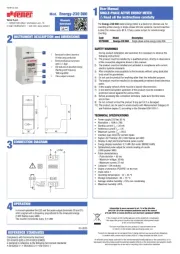
27 Augustus 2025
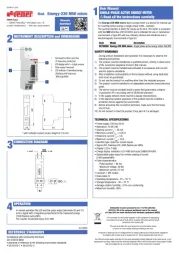
26 Augustus 2025

16 Mei 2024

17 Mei 2023

11 April 2023

30 Maart 2023

29 Maart 2023

1 Maart 2023

27 Februari 2023

11 Februari 2023
Handleiding Meetapparatuur
- Joy-it
- SHX
- Muller
- BJZ
- Kogan
- HOZO Design
- Noyafa
- Eizo
- Johnson Level
- Lanaform
- Murideo
- Clean Air Optima
- Stelzner
- Hama
- Mitutoyo
Nieuwste handleidingen voor Meetapparatuur
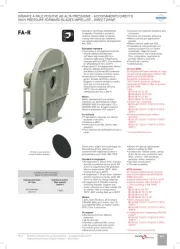
16 September 2025
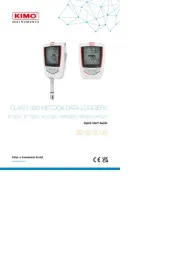
16 September 2025
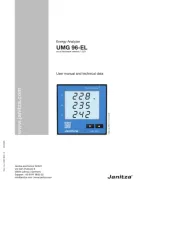
16 September 2025
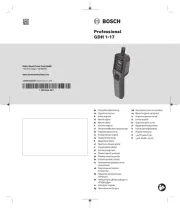
15 September 2025
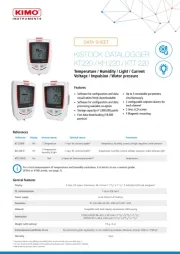
15 September 2025
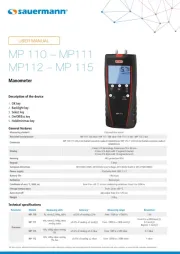
15 September 2025
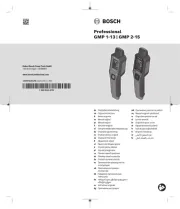
15 September 2025
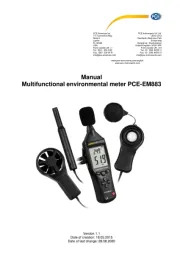
15 September 2025
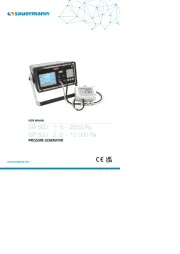
15 September 2025
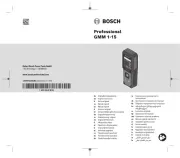
15 September 2025